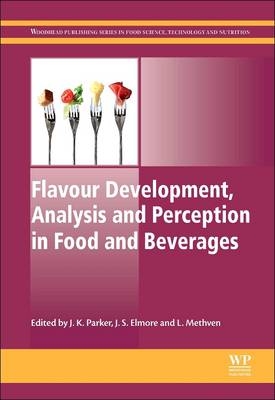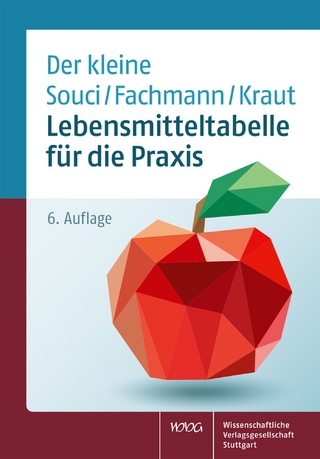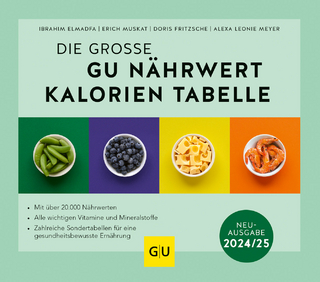
Flavour Development, Analysis and Perception in Food and Beverages
Woodhead Publishing Ltd (Verlag)
978-0-08-101382-3 (ISBN)
Jane K. Parker, The Flavour Centre, University of Reading, UK Stephen Elmore, The Flavour Centre, University of Reading, UK Lisa Methven, The Flavour Centre, University of Reading, UK
List of contributors
Woodhead Publishing Series in Food Science, Technology and Nutrition
Introduction
Part One: Characterisation and analysis of aroma compounds
1. Introduction to aroma compounds in foods
Abstract
1.1 Introduction to aroma
1.2 Sensomics and some definitions
1.3 Structure, aroma and occurrence of compounds containing carbon, hydrogen and oxygen
1.4 Structure, aroma and occurrence of oxygen heterocycles and phenols
1.5 Structure, aroma and occurrence of nitrogen compounds
1.6 Structure, aroma and occurrence of sulfur compounds
1.7 The future of flavour research
1.8 Further reading
2. Extraction techniques for analysis of aroma compounds
Abstract
2.1 Introduction
2.2 Choosing an appropriate method for aroma extraction
2.3 Good practice
2.4 Headspace SPME
2.5 Solvent-assisted flavour evaporation
2.6 Solid-phase extraction
2.7 The future of aroma extraction
3. Aroma extract analysis
Abstract
3.1 Introduction
3.2 Gas chromatography and mass spectrometry
3.3 Quantification
3.4 Gas chromatography–olfactometry
3.5 Future trends in GC–MS
4. Analysis of taints and off-flavours
Abstract
4.1 Introduction
4.2 The origins of taints and off-flavours in food
4.3 Consumer perception and sensory evaluation
4.4 Methods of analysis
4.5 Examples of taints and the methods employed
4.6 Future trends
5. Chemical sensors
Abstract
5.1 Introduction
5.2 Beverage industry
5.3 Perspectives for application of chemical sensors in the food and beverage industries
5.4 Summary and conclusions
6. Aroma release
Abstract
6.1 Introduction
6.2 Physicochemical properties of aroma compounds
6.3 Equilibrium partitioning of flavour compounds
6.4 Non-equilibrium partitioning of aroma compounds
6.5 Aroma release during oral processing
6.6 Future trends
6.7 Sources of further information
Part Two: Generation of aroma
7. Biogenesis of aroma compounds: flavour formation in fruits and vegetables
Abstract
7.1 Introduction
7.2 Biosynthesis of aroma compounds – general aspects
7.3 Maturation and ripening processes
7.4 Formation pathways for flavour compounds
7.5 Conclusions
8. Thermal generation or aroma
Abstract
8.1 Introduction
8.2 The Maillard reaction
8.3 Lipid oxidation
8.4 Other reactions
8.5 Process flavours
8.6 Summary and future work
9. The role of sulfur chemistry in thermal generation of aroma
Abstract
9.1 Introduction
9.2 The Maillard reaction
9.3 The Strecker degradation
9.4 Thiamine degradation
9.5 Allium species
9.6 Roasted sesame seeds
9.7 Conclusion
10. Predicting aroma formation with kinetic models
Abstract
10.1 Introduction
10.2 Maillard reaction
10.3 Kinetics and modelling
10.4 Multiresponse modelling
10.5 Some model studies on the Maillard reaction
10.6 Kinetics and modelling of flavour compounds
10.7 Future trends
11. Approaches to production of natural flavours
Abstract
11.1 Introduction
11.2 Classical fermentation from a sugar source
11.3 Microbial conversion of a natural precursor molecule
11.4 Enzymatic conversion of a natural precursor molecule using a plant homogenate
11.5 Fermentation from a sugar source using GMO
11.6 Conclusion
12. Managing flavour changes during storage
Abstract
12.1 Introduction
12.2 Lipid oxidation mechanism
12.3 Impact of lipid oxidation on flavour
12.4 Analysis of lipid oxidation
12.5 Prevention of lipid oxidation
12.6 Novel approaches for the prevention of oxidation
12.7 Future trends
12.8 Further reading
Part Three: Perception of flavour
13. Interaction of aroma compounds with food matrices
Abstract
13.1 Introduction
13.2 Thermodynamic and kinetic properties of aroma compounds
13.3 Physico-chemical interactions in simple systems
13.4 Physico-chemical interactions in multiphasic systems
13.5 Incidence of aroma–matrix interactions on aroma release and perception in cheeses
13.6 Conclusion and future trends
13.7 Sources of further information
14. Taste receptors
Abstract
14.1 Introduction
14.2 Tastants
14.3 Taste receptors: G protein-coupled receptors
14.4 Taste receptors: ion channels
14.5 Taste modulators
14.6 Conclusion and future trends
15. Umami compounds and taste enhancers
Abstract
15.1 The molecular basis of umami taste perception
15.2 Umami taste perception at the receptor level
15.3 Identification of taste-active and taste-modulating compounds
15.4 Molecular features of umami compounds and taste enhancers
15.5 Natural occurrence of umami compounds and taste enhancers
15.6 Summary and outlook: recent advances and trends in umami research
16. Techniques in sensory analysis of flavour
Abstract
16.1 Introduction to the fundamental types of sensory evaluation
16.2 Analytical versus synthetic measurement
16.3 Deciding on a sensory protocol
16.4 Analytical sensory techniques and their relevance to flavour evaluation
16.5 Individual differences in flavour perception
16.6 Conclusion
17. Consumer perceptions of food and beverage flavour
Abstract
17.1 Introduction
17.2 Multisensory integration and flavour perception
17.3 Consumer preferences
17.4 Individual differences in perception
17.5 Consumer-oriented methods
17.6 Conclusion
18. Physiological impacts of odour compounds
Abstract
Acknowledgement
18.1 Introduction
18.2 Immediate processes and effects
18.3 Post-inhalation and post-ingestion processes
18.4 Conclusions
Index
| Erscheinungsdatum | 07.07.2016 |
|---|---|
| Reihe/Serie | Woodhead Publishing Series in Food Science, Technology and Nutrition |
| Verlagsort | Cambridge |
| Sprache | englisch |
| Maße | 152 x 229 mm |
| Gewicht | 600 g |
| Themenwelt | Sachbuch/Ratgeber ► Gesundheit / Leben / Psychologie ► Ernährung / Diät / Fasten |
| Technik ► Lebensmitteltechnologie | |
| ISBN-10 | 0-08-101382-5 / 0081013825 |
| ISBN-13 | 978-0-08-101382-3 / 9780081013823 |
| Zustand | Neuware |
| Haben Sie eine Frage zum Produkt? |
aus dem Bereich


